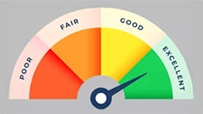Can You Convert Your Savings Account to a Current Account?
September 03, 2025

When it comes to managing our finances, having the right type of bank account is crucial. In India, 78% of the population has a bank account, and the two popular banking options are Savings Accounts and Current Accounts. While a savings account is designed for individuals to manage personal funds, a current account caters to the dynamic banking needs of businesses.
But what if you have a savings account and want to use it for business purposes? Can you convert savings to current account? In this blog post, we'll explore the features and purposes of both types of accounts and discuss banking options that may suit your needs.
What is a Savings Account?
A savings account is a basic bank account designed to help individuals save money while earning interest. Key features include:
- Interest earnings: Banks pay interest on the balance.
- Limited transactions: Suitable for occasional withdrawals.
- Low minimum balance: Ideal for salaried individuals and students.
- Purpose: Primarily for personal savings and expenses.
What is a Current Account?
A current account is tailored for businesses and professionals who need frequent and large transactions. Key features include:
- No interest earnings: Most banks do not offer interest on current accounts.
- Higher transaction limits: Suitable for high-volume banking needs.
- Higher minimum balance: Often requires a significant balance
- Purpose: Designed for day-to-day business operations.
Is it Possible to Convert a Savings Account to Current Account?
As per RBI mandate, you cannot convert a Savings Account into a Current Account and vice versa. If you have just started a business, it’s better to open a current account to manage your business transactions. You can have a separate Savings Account to deposit money and earn interest on the account balance. But since businesses carry out daily transactions often at bulk, it’s always good to open a current account to simplify your business transactions.
Benefits of Opening a Current Account
Although you cannot convert savings to a current account, you can open a new one and enjoy its benefits. Some of the advantages include:
- Premium Banking Experience: A current account offers personalized services tailored to meet the needs of businesses. For example, you can get an ATM transaction limit of up to ₹1,50,000 per day.
- Overdraft Facilities: Current accounts often come with overdraft facilities that can help you manage your cash flow effectively. You can get up to ₹3 lakh unsecured overdraft facility. This means that even if you run out of funds in your account, you will have access to additional funds up to this limit.
- Free ATM Transactions: Many banks offer free ATM transactions for the first year when you open a new current account. This can save you money on transaction fees.
- Multi-City Chequebooks and Nomination Facility: With a current account, you can request multi-city chequebooks, which are convenient for business transactions across different locations. Additionally, you can nominate someone to operate the account in case of any unforeseen circumstances.
- Easy Transfer to Other Branches: If you need to relocate or expand your business, you can easily transfer your current account to branches of other banks without hassle.
Final Thoughts
While you cannot convert savings to current account, alternatives are available to suit your banking needs. Opening a new current account can provide you with benefits like overdraft facilities and personalised services. However, it's also essential to consider the advantages of a savings account. By maintaining both accounts, you can manage your finances more efficiently and take advantage of the benefits offered by each.
Simplify your business transactions with Current Account. Open a Current Account with Ujjivan Small Finance Bank and enjoy multiple benefits.
Disclaimer:
The contents herein are only for informational purposes and generic in nature. The content does not amount to an offer, invitation or solicitation of any kind to buy or sell, and are not intended to create any legal rights or obligations. This information is subject to updation, completion, amendment and verification without notice. The contents herein are also subject to other product-specific terms and conditions, as well as any applicable third-party terms and conditions, for which Ujjivan Small Finance Bank assumes no responsibility or liability.
Nothing contained herein is intended to constitute financial, investment, legal, tax, or any other professional advice or opinion. Please obtain professional advice before making investment or any other decisions. Any investment decisions that may be made by the you shall be at your own sole discretion, independent analysis and evaluation of the risks involved. The use of any information set out in this document is entirely at the user’s own risk. Ujjivan Small Finance Bank Limited makes no representation or warranty, express or implied, as to the accuracy and completeness for any information herein. The Bank disclaims any and all liability for any loss or damage (direct, indirect, consequential, or otherwise) incurred by you due to use of or due to investment, product application decisions made by you on the basis of the contents herein. While the information is prepared in good faith from sources deemed reliable (including public sources), the Bank disclaims any liability with respect to accuracy of information or any error or omission or any loss or damage incurred by anyone in reliance on the contents herein, in any manner whatsoever.
To know more about Ujjivan Small Finance Bank Products Visit:"https://www.ujjivansfb.in"
All intellectual property rights, including copyrights, trademarks, and other proprietary rights, pertaining to the content and materials displayed herein, belong
to Ujjivan Small Finance Bank Limited or its licensors. Unauthorised use or misuse of any intellectual property, or other content displayed herein is strictly prohibited and the same is not intended for distribution to, or use by, any person in any jurisdiction where such distribution or use would (by reason of that person’s nationality, residence or otherwise) be contrary to law or registration or would subject Ujjivan Small Finance Bank Limited or its affiliates to any licensing or registration requirements.
FAQs
1. Can I convert savings to current account?
No, making an account conversion from savings to account is impossible. However, you can open a new current account and close your existing savings account if needed.
2. What are the eligibility criteria for opening a current account?
The eligibility criteria for opening a current account include being a resident individual, Hindu Undivided Family (HUF), partnership firm, sole proprietorship firm, private company, limited liability partnership, trust, association of persons, club or society (source).
3. Can I maintain both a savings account and a current account?
Yes, you can maintain both accounts with the same bank. This allows you to segregate your personal and business finances effectively.
4. What are the charges associated with a current account?
The current account charges vary from bank to bank. Check with your chosen bank regarding their fee structure.
5. Can I use my savings account for business transactions?
While you can use your savings account for business transactions, opening a separate current account for business purposes is recommended. This helps keep your personal and business finances separate and simplifies accounting.
6. What documents are required to open a current account?
The documents required to open a current account may include identity proof, address proof, PAN card, business registration documents (if applicable), and passport-sized photographs. Check with your chosen bank for their specific requirements.
7. How long does it take to open a current account?
The time taken to open a current account may vary depending on the bank and the completeness of the documentation provided. However, it typically takes 7-10 working days.
8. Can I convert my salary account into a current account?
No, it is impossible to directly convert a salary account into a current one. However, you can open a new current account if required.
9. Are there any restrictions on withdrawals in a current account?
There are usually no restrictions on withdrawals from a current account. However, the bank may have certain daily withdrawal limits or charges applicable for exceeding those limits.
10. Can I avail of an overdraft facility with a savings account?
No, overdraft facilities are typically available only with current accounts. Savings accounts do not offer this feature.
Latest Blogs

APK Fraud: How One Wrong Download Could Empty Your Bank Account
May 13, 2025
Picture this. You’re sipping your evening tea when your phone rings.

Gold Loan LTV Ratio Explained (75% to 85%): What It Means for Borrowers
March 20, 2025
In June 2025, the Reserve Bank of India (RBI) introduced a significant relaxation for gold loan borrowers: the maximum Loan-to-Value (LTV) ratio for loans below ₹2.5 lakh was raised to 85%, up from the long-standing cap of 75%. Loans between ₹2.5 lakh and ₹5 lakh can now go up to 80%, while loans above ₹5 lakh continue under the 75% ceiling.

Good Debt vs Bad Debt: Learn the Difference
August 13, 2025
Every month, millions of Indians wait for the familiar debit alert, an EMI deducted from their account.

Got a Tax Refund? 5 Smart Ways to Put Your 2025 Refund to Work
August 13, 2025
For many taxpayers, there’s a unique sense of relief when a tax refund arrives.

Credit Score Not Improving? 5 Mistakes You Might Be Making
August 13, 2025
For most of us, a credit score feels like a silent judge sitting in the background of our financial lives.





